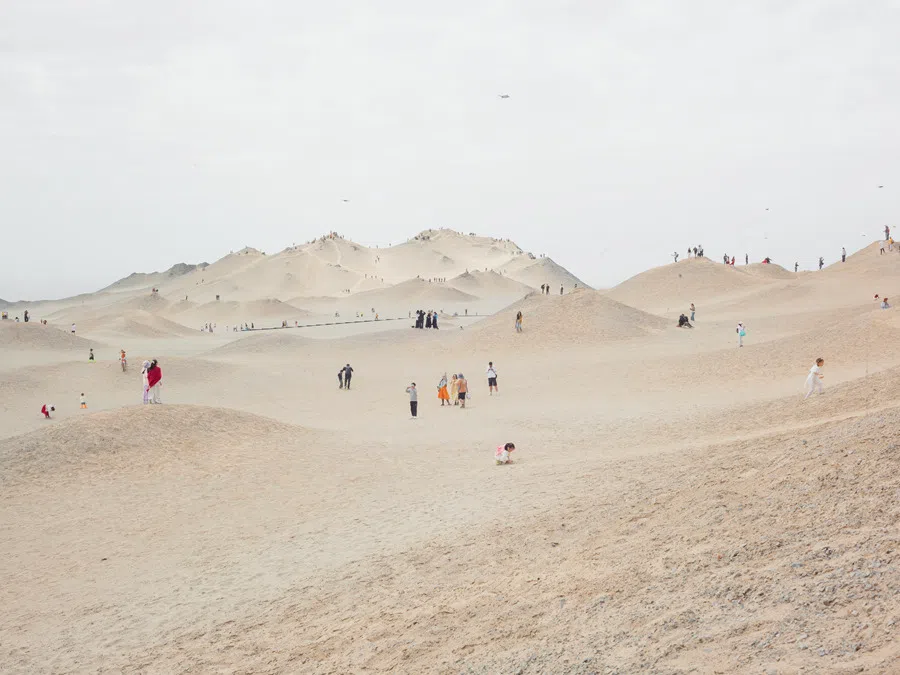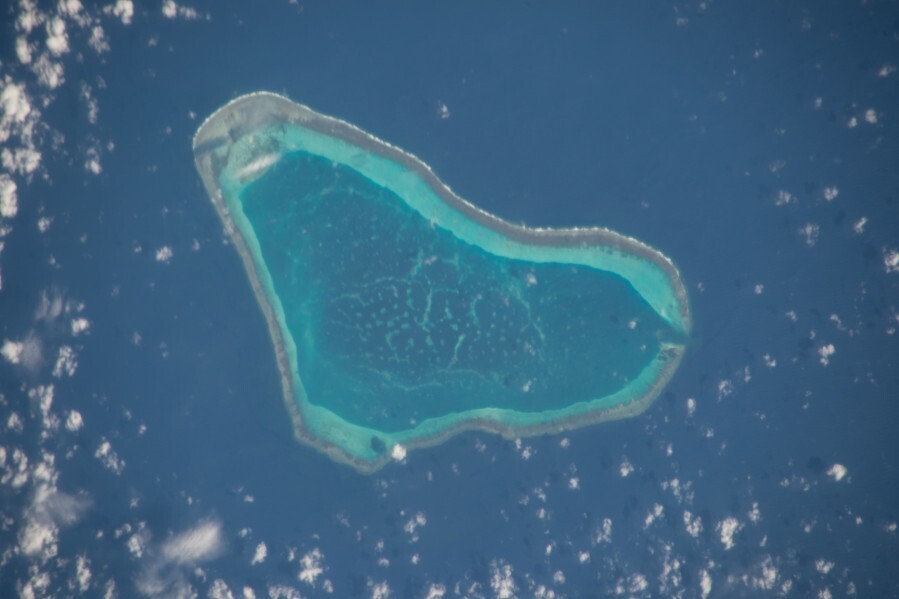[Photos] The Yellow Land: From Dunhuang to Heidu Mountain
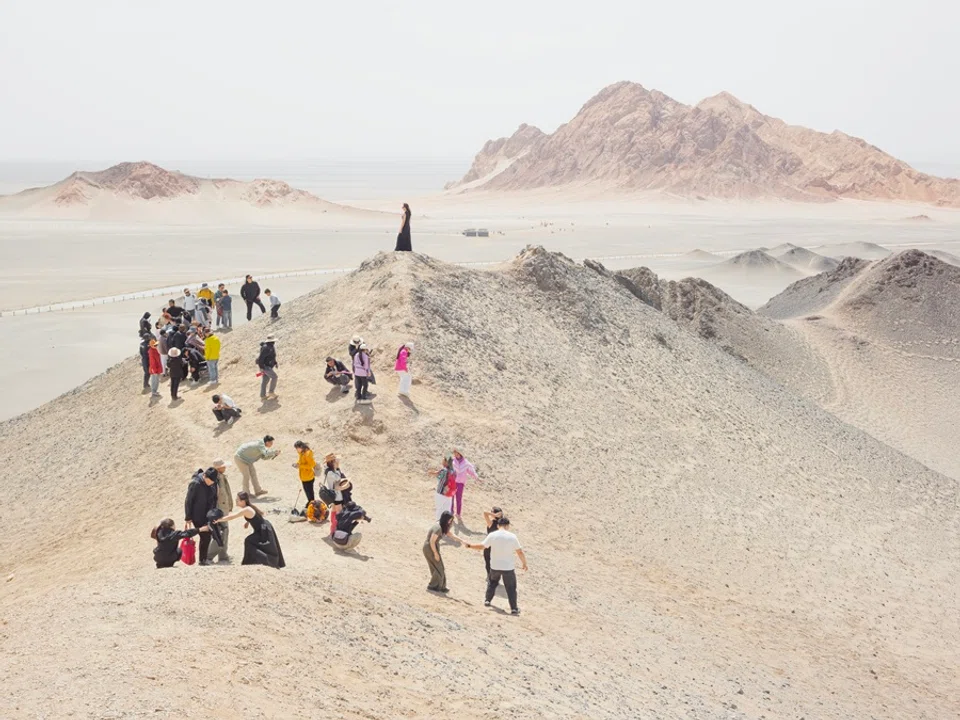
From ancient dunes to deserted oil fields, photographer Zhang Kechun captures the raw beauty of the desert — a landscape where nature’s grandeur meets the enduring marks of human presence.
(Photos: Zhang Kechun)
In August 2025, I started my photographic series The Yellow Land (《大漠》), exploring desert landscapes. The journey began in Dunhuang, Gansu, winding through the western regions of the Qilian Mountains (祁连山), into the expanse of the Qaidam Basin in Qinghai, and onward to Heidu Mountain (黑独山) near Lenghu town. I planned to spend two weeks crossing the Gobi Desert, passing through the wind-carved yardang, before reaching the remnants of oil fields and the desolate uninhabited zone.
Departing from Chengdu, I arrived in Dunhuang after a full day’s journey by train. At dawn the next morning, I set off in a rented Jetta, bound for my first shooting location — Mingsha Mountain (鸣沙山).
The air grew drier as I headed west, heavy with the scent of dust. Under the sun, Mingsha Mountain unfurled like golden waves, endless and shimmering. By midday, the desert heat surged, and everything before me burned with a blinding glare. Upon arrival, I joined the heat-weary travellers and took refuge in a nearby guesthouse, letting the heat of the day pass in quiet rest.
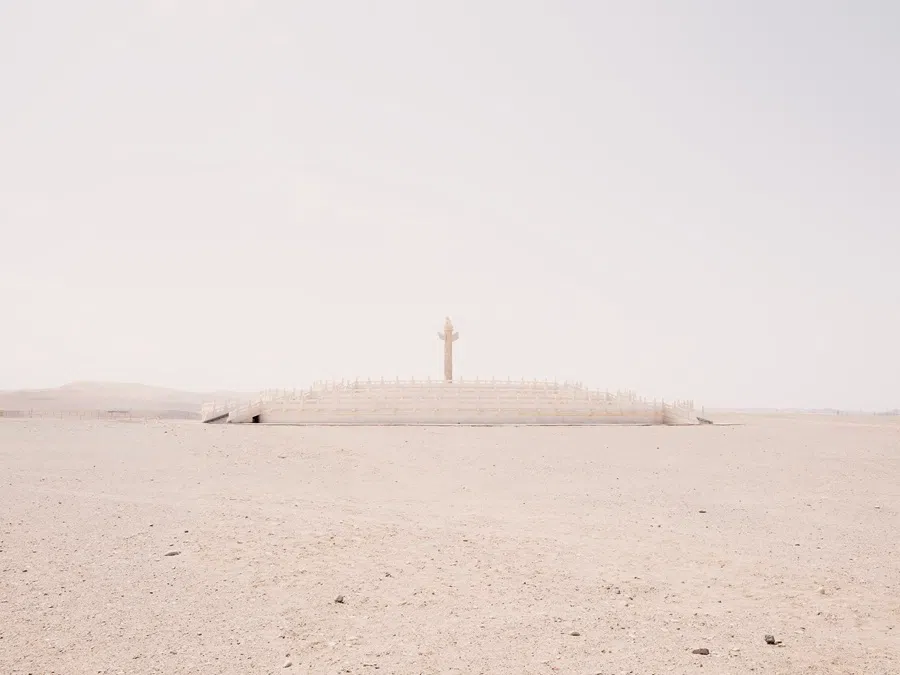
After the sunlight softened at around 5 pm, I shouldered my heavy gear and slowly made my way towards the dunes.
All around, clusters of tourists in various cosplay had begun their ascent, posing for their photo shoots atop the sand. Elsewhere, local tour guides led caravans of camel riders in single file, winding steadily up the higher slopes. On a towering dune not far off, tens of thousands had already gathered, seated in anticipation of the nighttime desert concert. The entire expanse of Mingsha Mountain bore no trace of desolation, pulsating with life and noise.
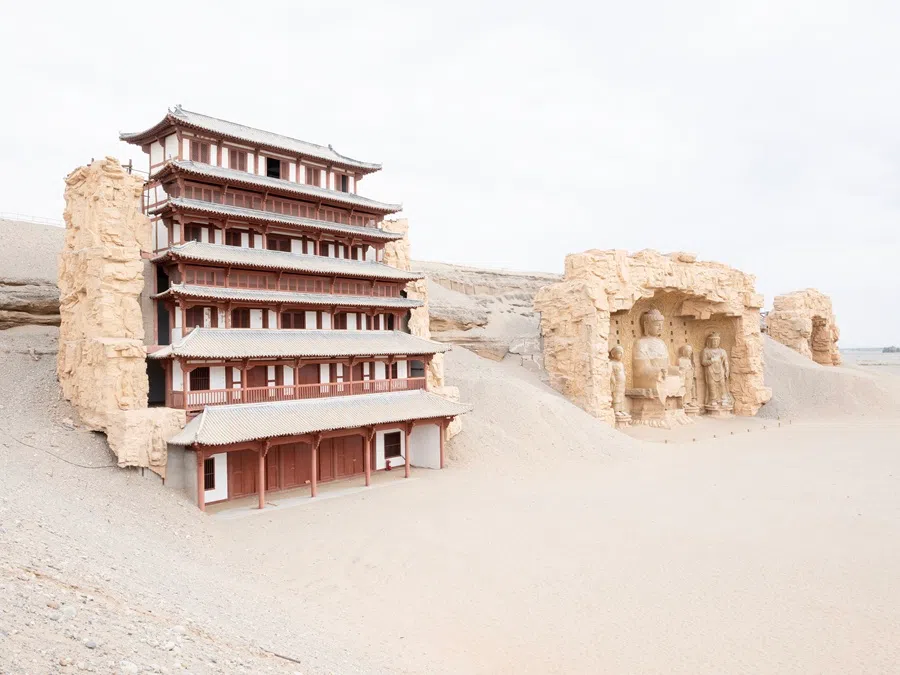
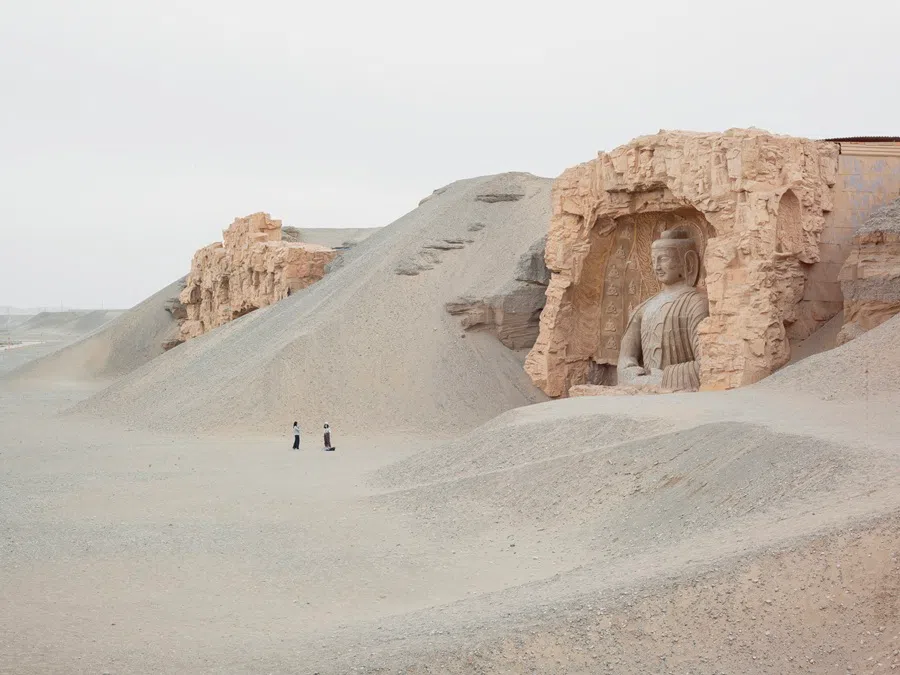
After I finished shooting at Mingsha Mountain, I headed northwest to the Dunhuang Silk Road Heritage City located 18 kilometres from Dunhuang on the Gobi Desert. Originally a film set completed in 2017, the site features replicas of the Mogao Caves, Longmen Grottoes, Yungang Grottoes, and various other renowned historical buildings from China and abroad. Once abandoned due to a lack of visitors, it has been rediscovered in recent years thanks to the rise of social media, gradually becoming a popular photo spot, and has since reinstated an entry fee.
Endless graves
I set off again from Dunhuang to Yumen at the end of the Hexi Corridor, and saw before me an endless expanse of the yellow-brown Gobi Desert. The road is dotted with small earthen mounds, which I initially thought were a unique geological feature of the desert. It was not until I passed by again the next day that I noticed a stone tablet by a wire fence marking the site as the Shanshuigou Tombs cluster.
Graves stretched endlessly, burying tens of thousands of deceased souls across countless generations, some even dating back over 2,000 years to the Han dynasty. In the distance, a powerful beam of light continuously shone. It was as if time and space were inverted here, transcending reality and evoking a sense of distance and mystery. It is actually the molten salt tower of a local photovoltaic power station.
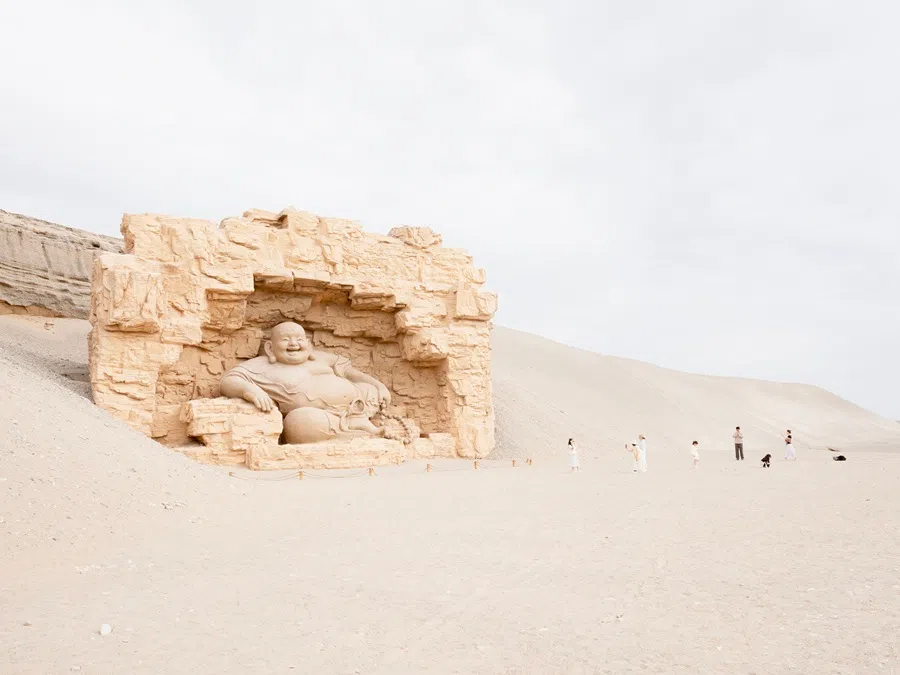
Afterwards, I drove towards Lenghu, and passed by the Akesai Boluo Zhuanjing Film Base in Aksay Kazakh Autonomous County. The site was transformed from the ruins of the old town of Aksay. Scattered among the remains are monster props left behind from the film Chronicles of the Ghostly Tribe, which occasionally let out eerie howls that echo through the deserted town...
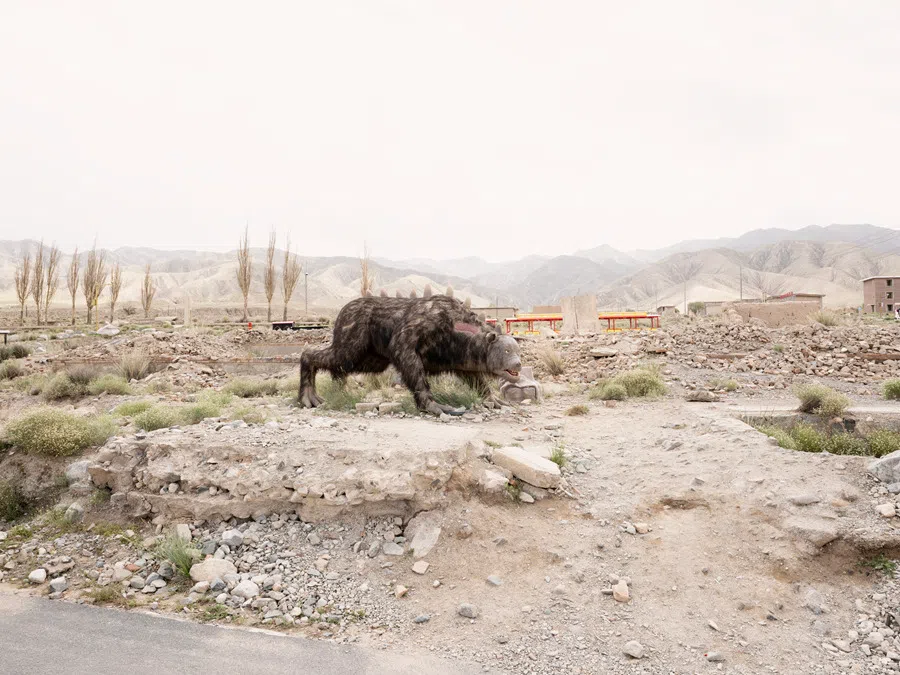
Passing through the old town, my journey continued as the road wound upward to an altitude of 3,000 metres. In the distance, Dangjin Pass (当金山口) gradually became shrouded in mist, the entire range resembling a giant dragon coiled in the clouds. On the other side of the window lay the tail end of the Qilian Mountains, where the snowy peaks starkly contrasted with the surrounding Gobi landscape.
The route then descended slowly into the Qaidam Basin, where the terrain shifted to saline-alkali soils. Along the roadside, patches of green began to appear, signalling the approaching Emerald Lake — an artificial salt lake. On a clear day, the lake’s mirror-like surface reflects the blue sky, its pristine clarity calming and serene. Nearby, rows of wind turbines stand tall like white giants stretching their arms under the blue sky, silently accompanying the beautiful scenery across the Gobi.
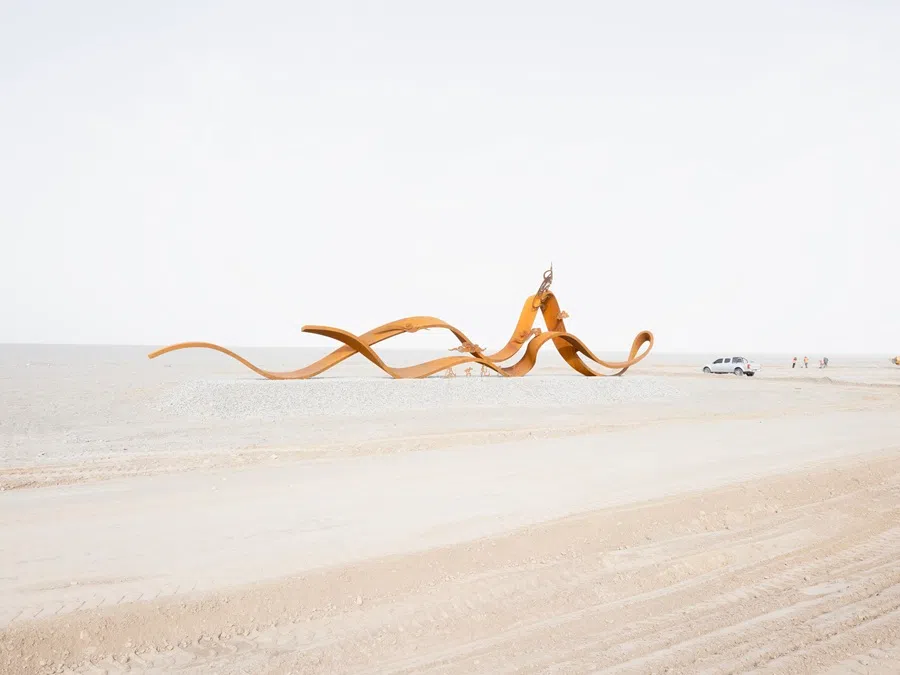
Lenghu and Heidu Mountain
Travelling onwards, I reached Lenghu oil town. A “city of oil” from the mid-20th century, only abandoned buildings remain now, with vast, crumbling ruins scattered across the expansive Gobi Desert, evoking a silent desolation, taking away everything that once was. Just as I was trying to imagine the bustling life that once filled this place, a sandstorm suddenly swept in from the distance. I quickly got out of the car to capture the moment with my camera.
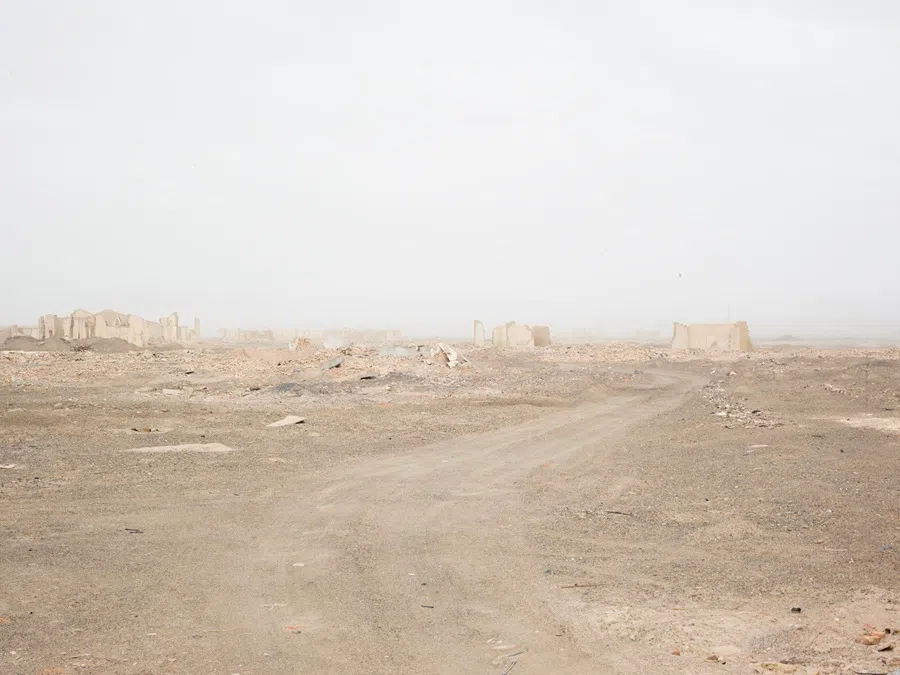
The final destination of my journey was Heidu Mountain, some ten kilometres northeast of Lenghu town. This mountain marks the westernmost edge of the Sai Shitengshan range (赛什腾山脉) and its name in Mongolian means “the black mountain where grass does not grow”. It is also known as “the place on Earth that most resembles the Moon”.
Heidu Mountain’s unique black yardang formations result from prolonged wind erosion; its black sand and stones washing over the yellow-brown Gobi like ink splattered across the range. In recent years, thanks to exposure through social media, road trippers have flocked here to take photos. It officially opened to visitors in May 2025.
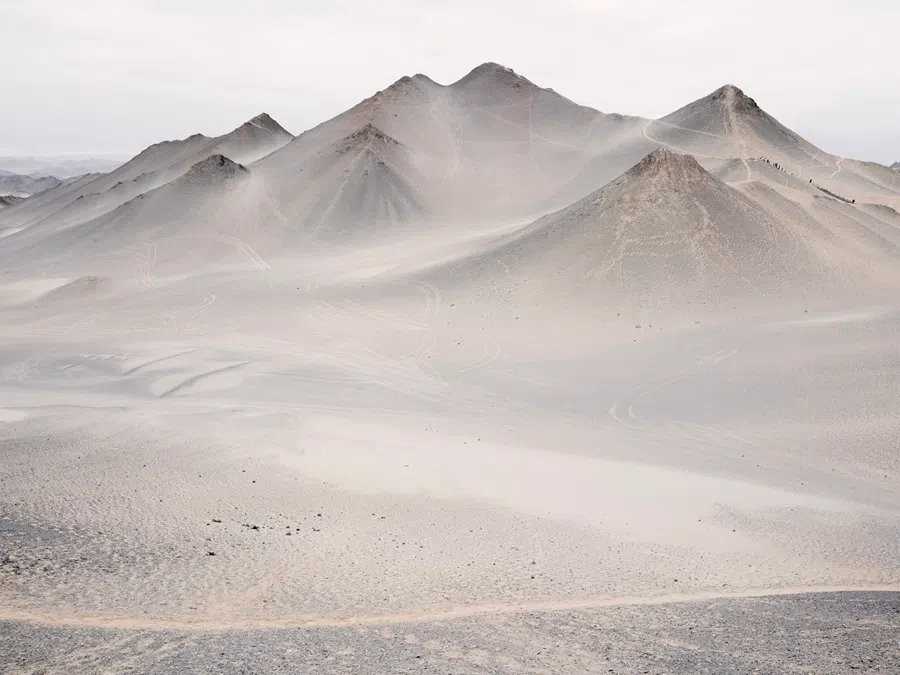
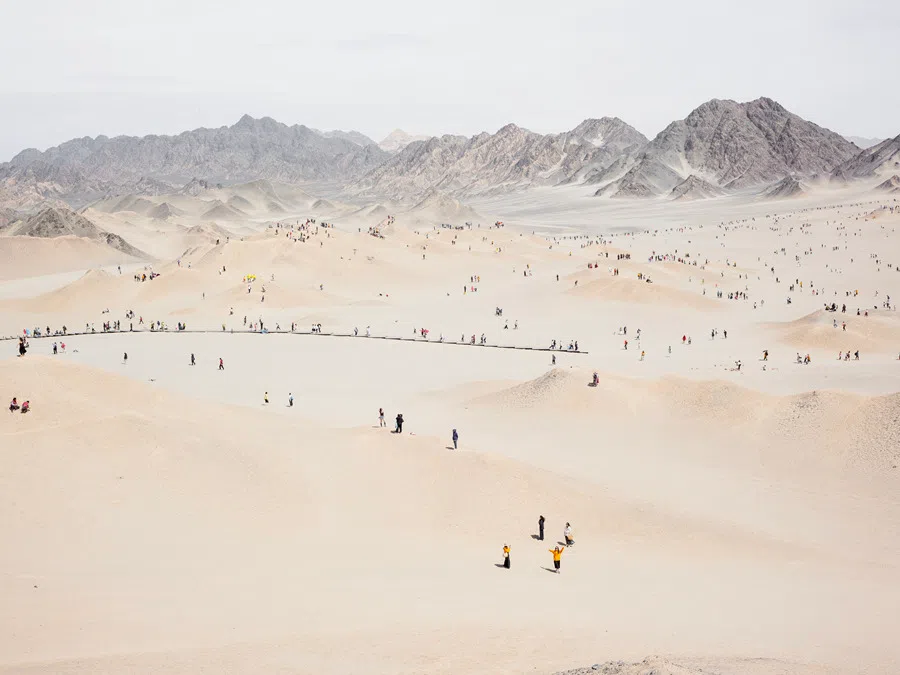
It was already afternoon by the time I arrived. After purchasing my ticket and entering the scenic area, the shuttle bus drove for over ten kilometres before the terrain began to shift — undulating black ridges gradually came into view. It looked like an ink-wash painting splashed across the canvas of the earth, leaving me in awe of nature’s breathtaking magnificence. However, as it was the summer holiday season and the site is now open to the public, the area was crowded with eager visitors. The originally black mountain surfaces within the sightseeing area had already been trampled into a desert yellow…
Man and nature
This journey took me across a range of natural landscapes, while also documenting the traces of human transformation left behind. I have always been fascinated by how mankind has changed nature, and what we leave behind.
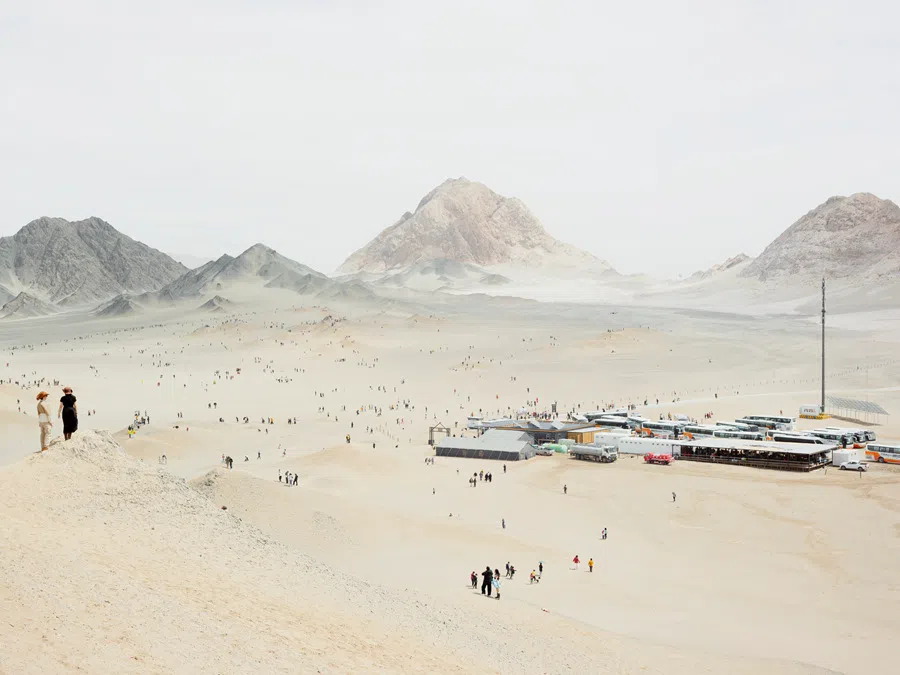
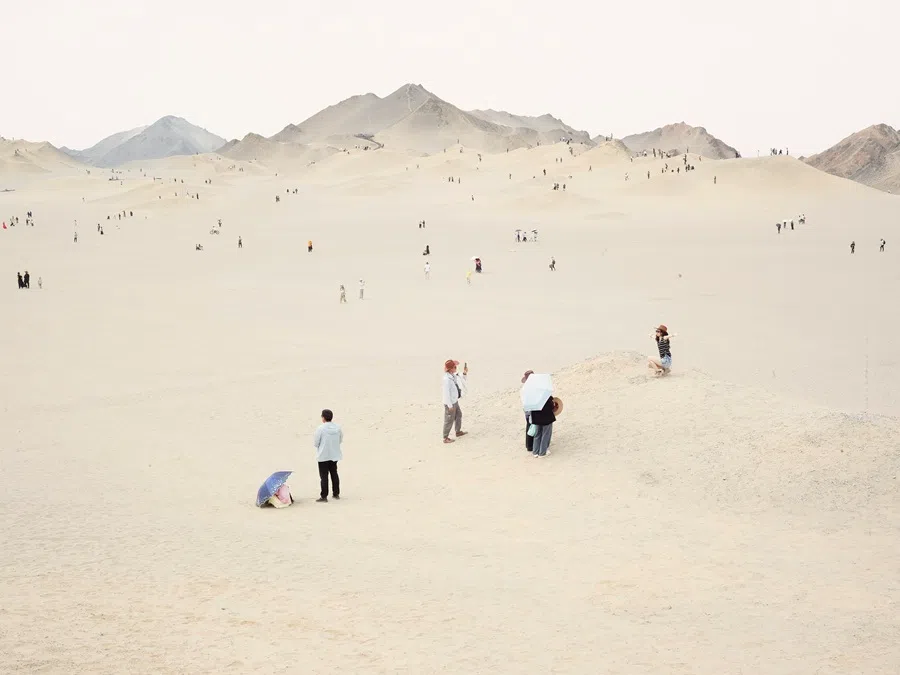
Some of the sights I saw were breathtakingly beautiful, while others felt almost absurd… Yet all the wonders and surprises that span both nature and human history make me eager to embark on my next journey.
